Hidden doors are the whimsical trend that can actually be very practical – here's how designers use them
Discreet and intriguing, these clever hidden door ideas are perfect for enhancing the function and visual unity of a room
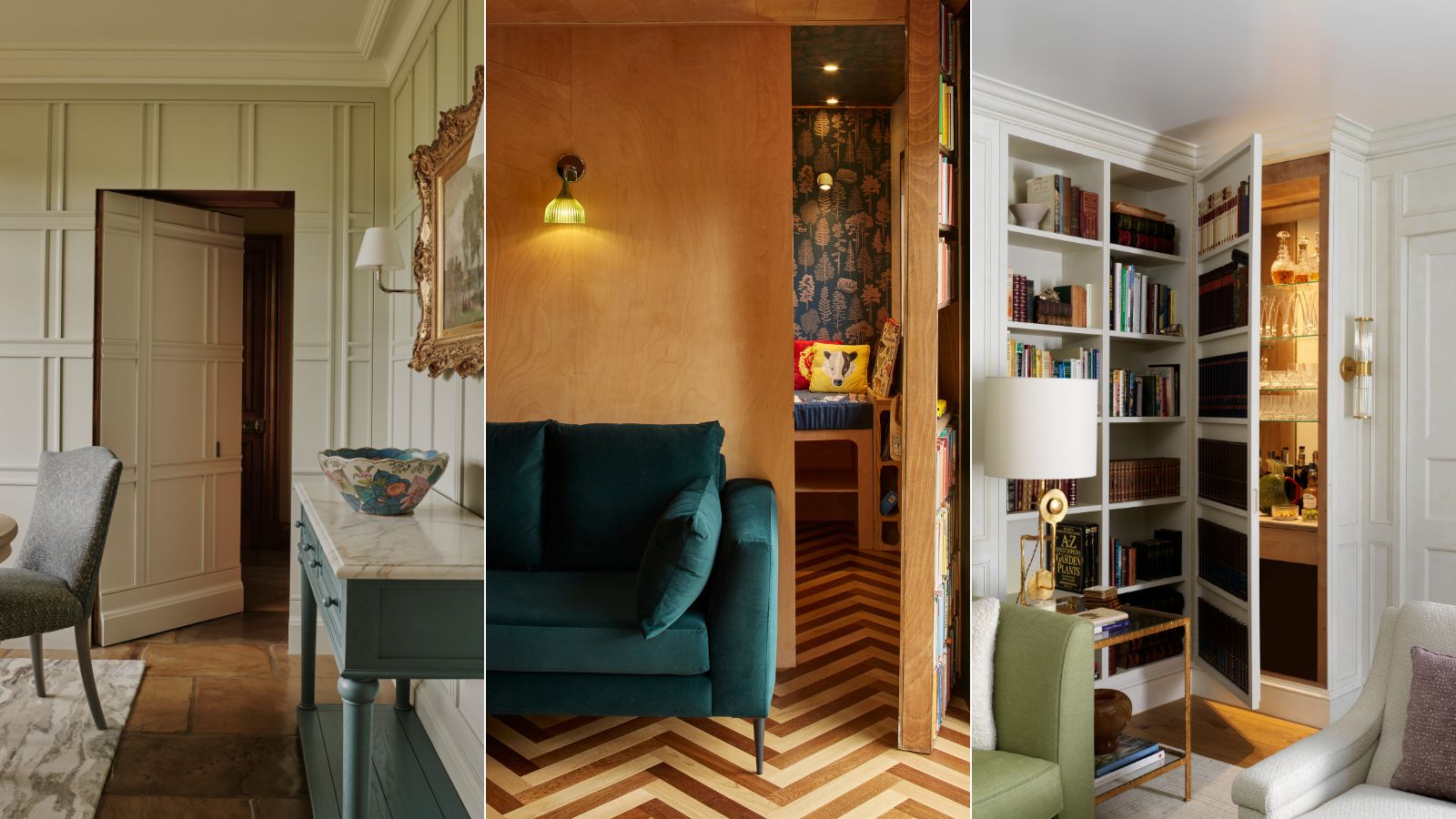
- 1. Add a Narnia door to bedroom closets
- 2. Maximize space and light with a mirrored door
- 3. Keep kitchens sleek with hidden doors to service areas
- 4. Set a jib door into classical wall paneling
- 5. Use a hidden door to give a room a new identity
- 6. Conceal a doorway in bookshelves
- 7. Camouflage doors with a decorative mural
- 8. Bring fun to guest accommodation with a slim hidden door
- 9. Paper doors to create a whimsical cocooning feel
- 10. Use a hidden door to conceal a home bar
- 11. Consider your handles

We’re spotting hidden doors everywhere at the moment – connecting bedrooms to en suites, kitchens to pantries, and leading from sitting rooms to home offices and secret reading nooks.
Whether integrated into the architecture in the form of a jib door, or disguised behind millwork or joinery, these clever interior features offer discrete connections between spaces, helping bring visual unity and purpose to rooms that can often feel like thoroughfares. Discreet and seamless, hidden doors are a great device for creating rooms with a calm, open, and cohesive feel along with an element of fun and intrigue. And while they may be an interior design trend that's fun and creative, designers argue they can be a really practical addition to a home too.
To give you a taste of the limitless possibilities of this ingenious feature we’ve rounded up an array of inspiring hidden door ideas alongside some handy tips from the experts.
11 intriguing hidden door ideas
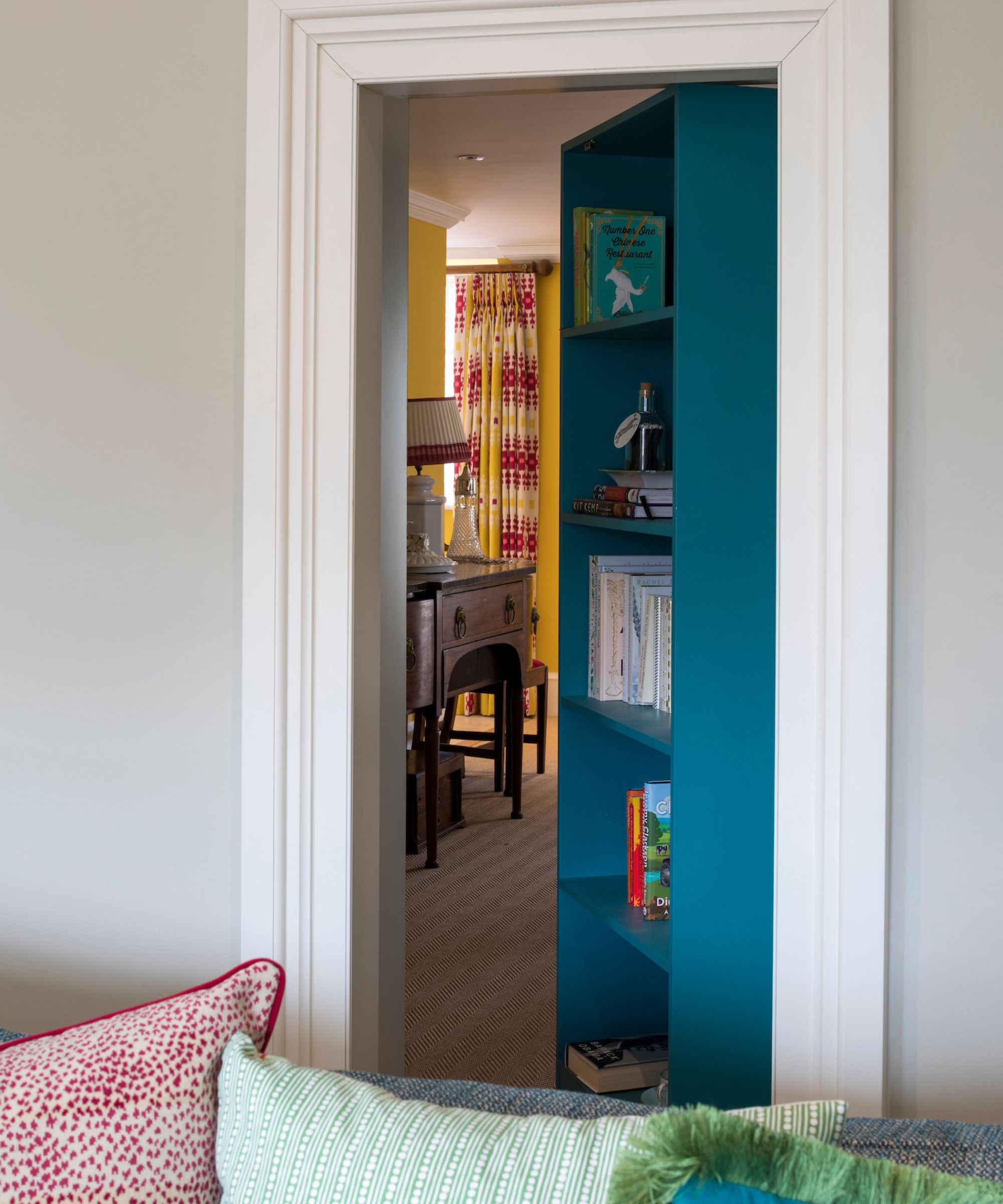
While hidden doors are growing in popularity, they are nothing new, with many examples traceable in historic homes, where they were often concealed in wall paneling to discreetly link service areas with more formal areas. Today there are an array of styles available from contemporary handleless doors set into kitchen cabinets and space-enhancing mirrored doors integrated into closets, to doors disguised as traditional bookshelves or camouflaged into wall murals.
When combined with shelving, hidden doors can be a great multi-functional, space-saving device, but one of their main benefits is their visual appeal as they provide access without disrupting the visual unity of a room scheme, plus they offer a sense of fun and an element of surprise.
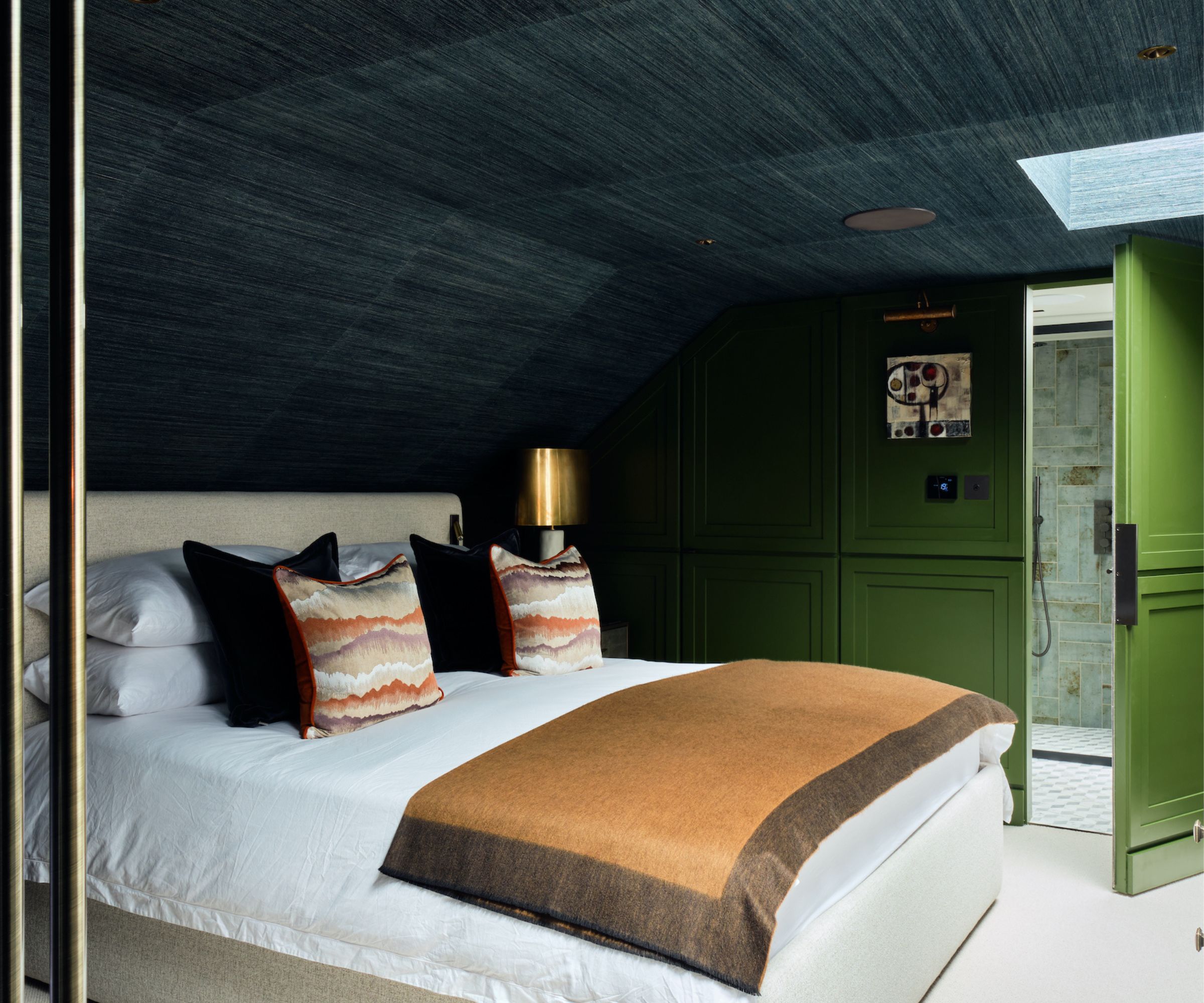
'The desire for adding a hidden door is certainly on the rise with this clever design concept offering a dramatic impression that delivers playfulness and intrigue reminiscent of the wardrobe in Narnia. It also offers an aesthetic appeal, being an effective way to deliver a sleek and contemporary finish with the concealed door ensuring an uninterrupted framework across the room,’ says Felix Milns, founder of Hux London.
‘A hidden door is also very effective at enhancing the atmosphere of the room it conceals, elevating the room and making the discovery of it an integral part of the experience of being in that space. A bathroom becomes a wonderfully indulgent and private, spa-like room with a seamless transition from the bedroom, a playroom accessed through a secret door greatly appeals to a child’s natural sense of imagination and fun, and a snug becomes a wonderful, cocooning space that feels like an escape from everyday life,' adds Felix Milns.
'There are also practical advantages, with cleverly concealed doors providing an element of security when leading to a dressing room where jewelry may be kept.’
1. Add a Narnia door to bedroom closets
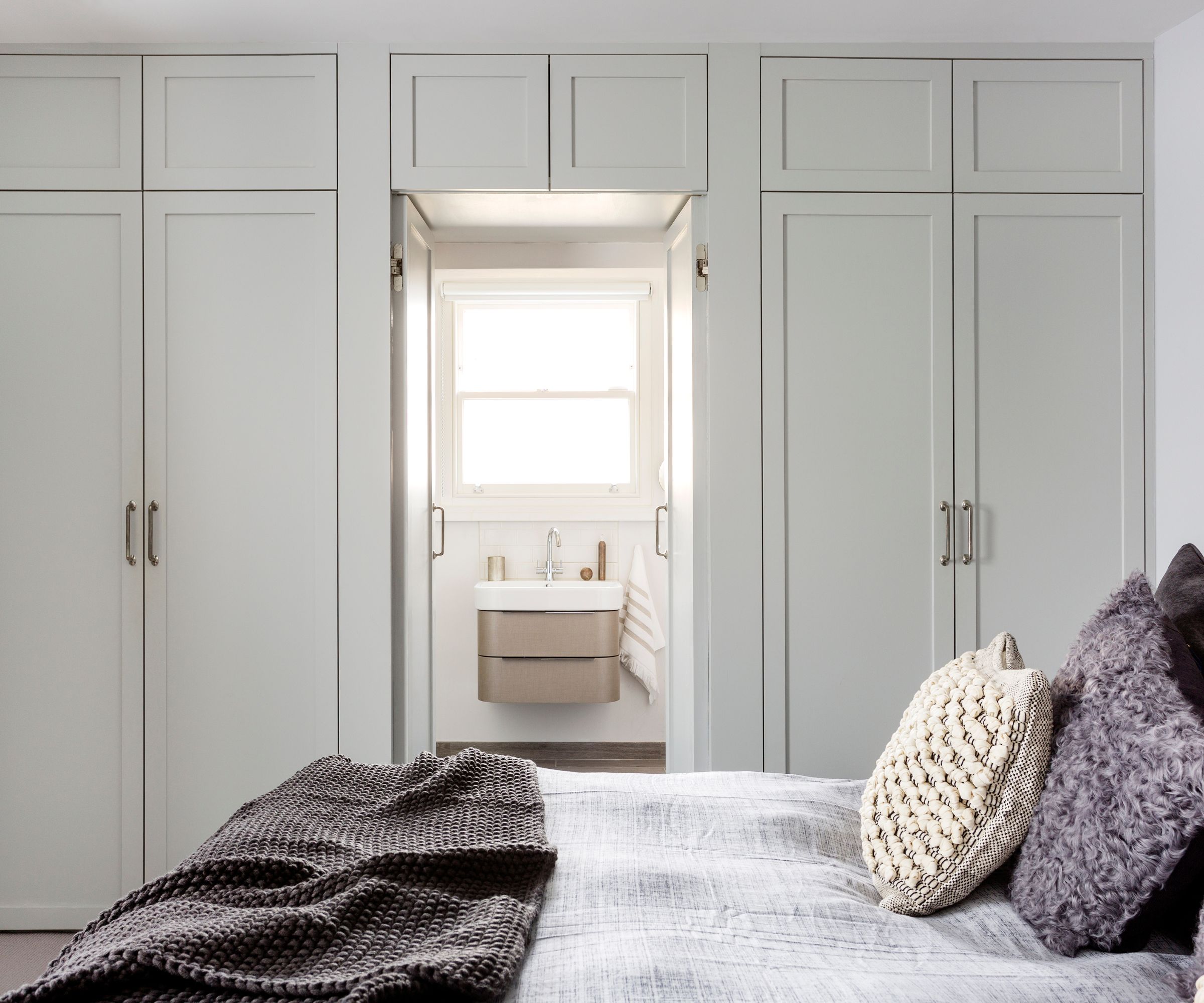
In small bedrooms or attic bedrooms, there's often little scope for integrating storage. Sometimes the only practical wall on which to install a run of closets might be the wall with the door to a hallway or en suite. In this case, introducing a run of bespoke fitted closets together with a Narnia door can be a practical solution.
'For me, the best way to create a hidden or secret door is to use built-in joinery to give the illusion of a bookcase or closet. Not only does it conceal the door, but it also adds a fun and exciting element to your home. Working with a joiner, you can utilize an existing door frame and have a bookcase built into it, using invisible hinges to keep the door hidden on either side,' says Emma Deterding, founder and creative director, Kelling Designs.
'Alternatively, you could create a seamless look by using the same wallpaper and paint as on the walls on a flat door – keeping the door as flat without any detailing is key as it'll blend into the walls with ease.'
2. Maximize space and light with a mirrored door
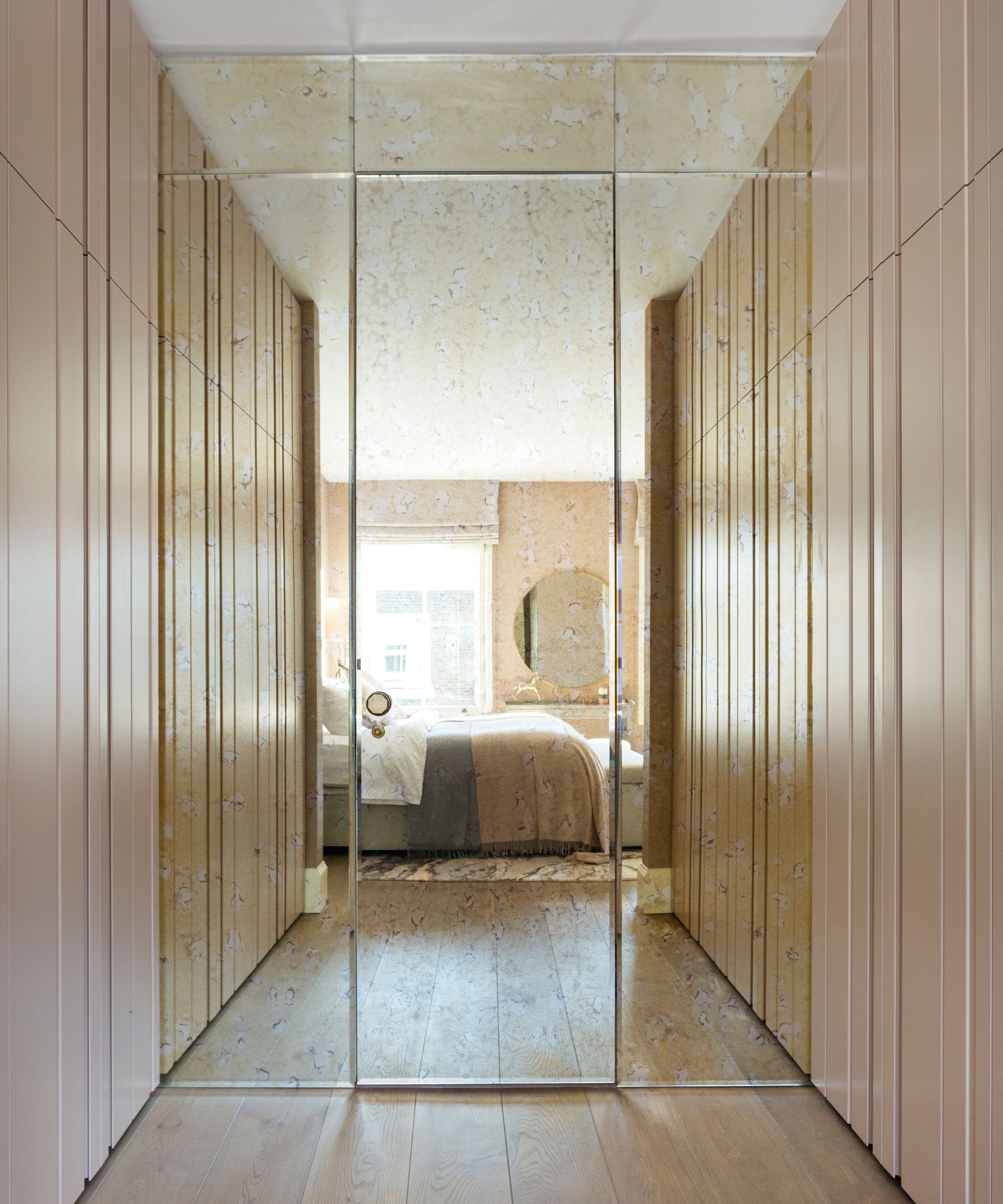
Concealing a door in a run of closets is a great way to keep bedrooms feeling clean and open and works particularly well in small bedrooms. Going for a mirrored door can further enhance the feeling of light and space, but also adds a feeling of luxury and glamour, as demonstrated in this bedroom by Hux which leads to a dressing room. When planning a hidden door always think about the best-suited materials says Felix Milns, founder of Hux London.
'The key is to ensure the concealed door feels natural to the existing look and function of the room. In a dressing room where you would expect to find a mirror, a door can be added within a mirrored glass wall, leading into a bathroom. Wall paneling is also an excellent option, whereby the existing linear framework of the hidden door frame can be easily concealed within the lines of paneling.'
3. Keep kitchens sleek with hidden doors to service areas
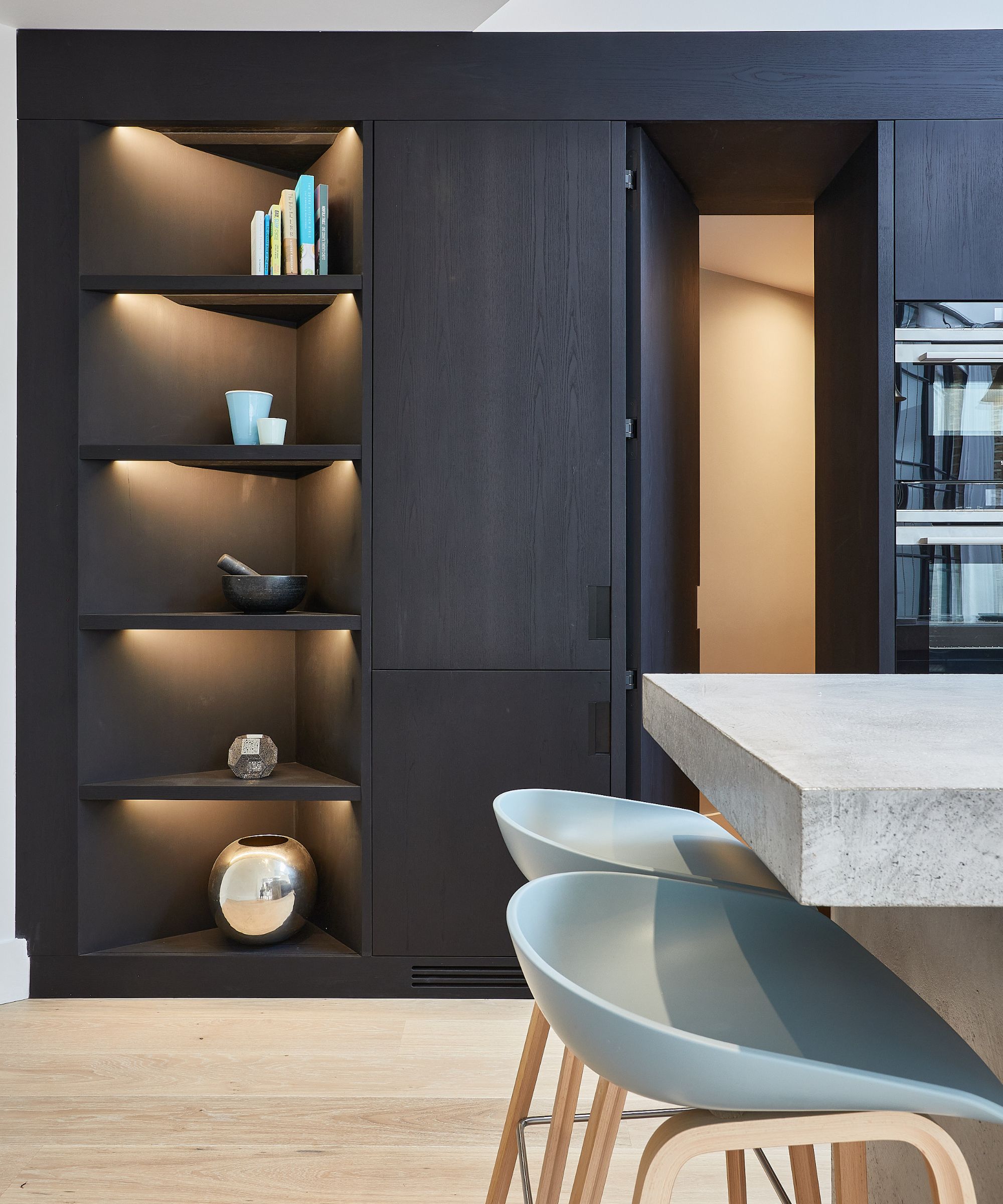
Kitchens by Holloways
Over the past decade, it’s clear that hidden pantries, laundry rooms, or auxiliary kitchens are on the rise. With sleek contemporary kitchen styles now popular, and a desire for clean, sleek open-plan living spaces, many people are opting to hide away hardworking service areas and introducing hidden doors is a wonderful way to obscure them.
Disguising an access point in a run of cabinets helps keep kitchens feeling seamless and visually unified. For those who love the contemporary look, floor-to-ceiling cabinets with discreet door handles or handleless push-to-open doors are the perfect way to capture that sleek aesthetic.
'Hidden doors and "invisible kitchens" are becoming more popular as homeowners are increasingly making their kitchens a more lived-in part of their home. Having appliances and too many things on show will take away from the calming and relaxing feel you want to have in a more ‘lived in’ area of the home,' says Robert Burnett, design consultant, Kitchens by Holloways.
'A hidden door was included in this design to allow for a “back kitchen”, where the main meal prep could take place, keeping a seamless and uncluttered appearance in the front or “main” kitchen area. This meant that the space would be perfect for entertaining.'
4. Set a jib door into classical wall paneling

Artichoke, photograph Christopher Horwood
Often seen in grand houses of the Georgian period, jib doors built into wooden wall paneling are a wonderful way to respect and enhance the elegant architecture and proportions of a period home.
‘At Artichoke we’ve seen an increased interest from clients for “secret” jib doors - these originate from the Georgian period, where proportion, symmetry, and exceptional cabinetmaking were in abundance. They require the highest levels of skill to ensure the scribed edges disappear into the wall,’ says Bruce Hodgson, founder of Artichoke. ‘Not just a thing of beauty, they preserve the symmetry and help build the aesthetic of the room whilst adding an element of fun and character.’
5. Use a hidden door to give a room a new identity
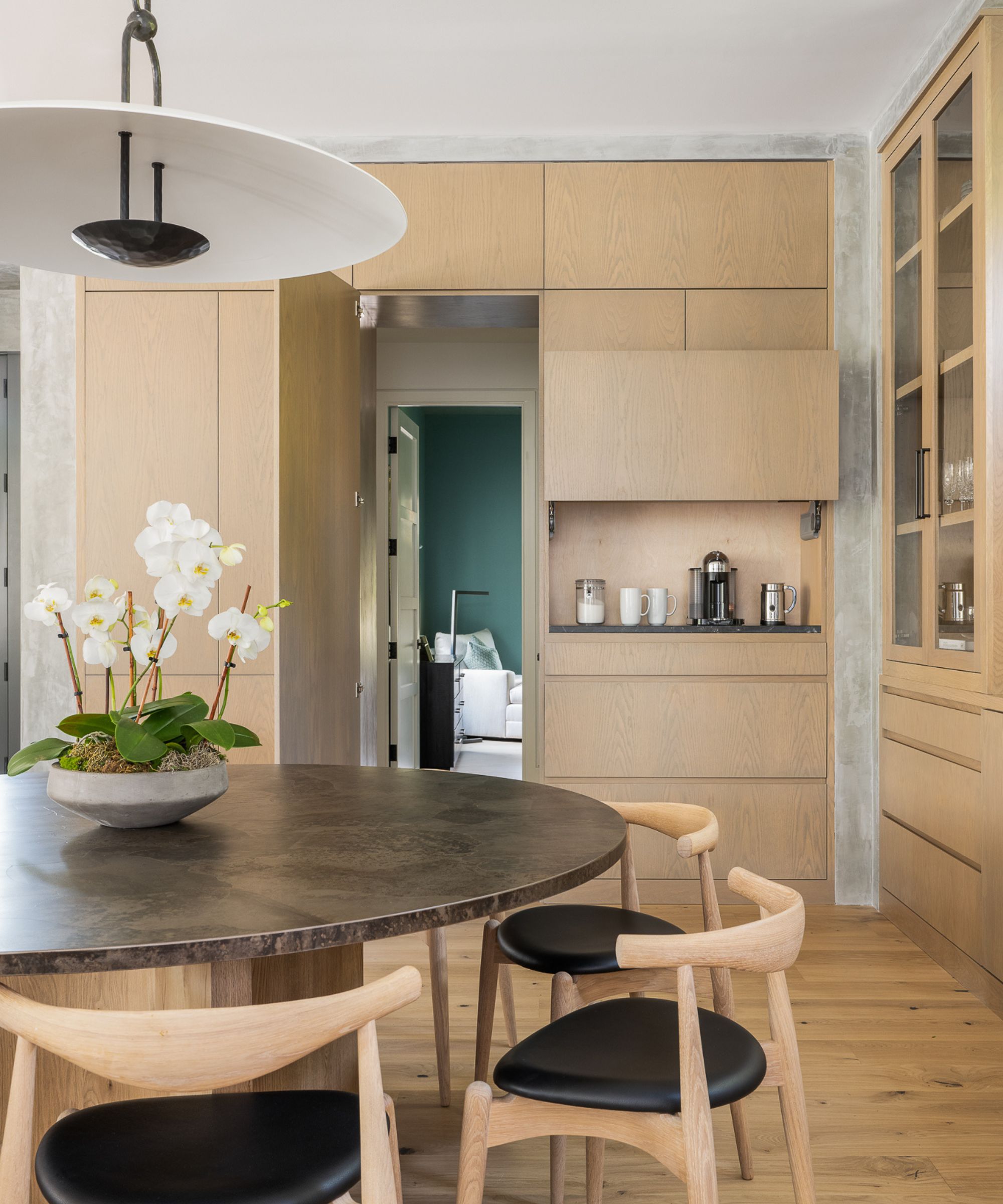
The beauty of hidden doors is that they provide practical and visual benefits. Often rooms with more than one doorway can end up feeling like a thoroughfare and can lack purpose or integrity. Disguising at least one of the access points behind unified storage can help give the space its own identity and create a cohesive feel. Here Herlong Architects and Interiors transformed a linking space into a practical and stylish dining area, cleverly hiding a passage to a guest suite.
'We proposed a hidden door concept here because we wanted the space to feel as dedicated dining room and for the hidden passageway to integrate with the floor-to-ceiling storage cabinets. The hidden door leads to the guest suite, which is not used daily so it made sense to have it hidden, although the door is very light and easy to operate,’ says Cintra Sedalik, interior designer at Herlong Architecture and Interiors.
‘The client loves to entertain so in order to maximize her storage for cooking and entertaining wares, we designed hardware-free storage cabinets that are easily opened through magnetic touch latch and integrated mitered pulls, overall adding to the clean and contemporary look the client was after. The cabinetry is made from stained white oak, which we felt added an element of warmth, as all finishes used were meant to evoke nature.’
6. Conceal a doorway in bookshelves
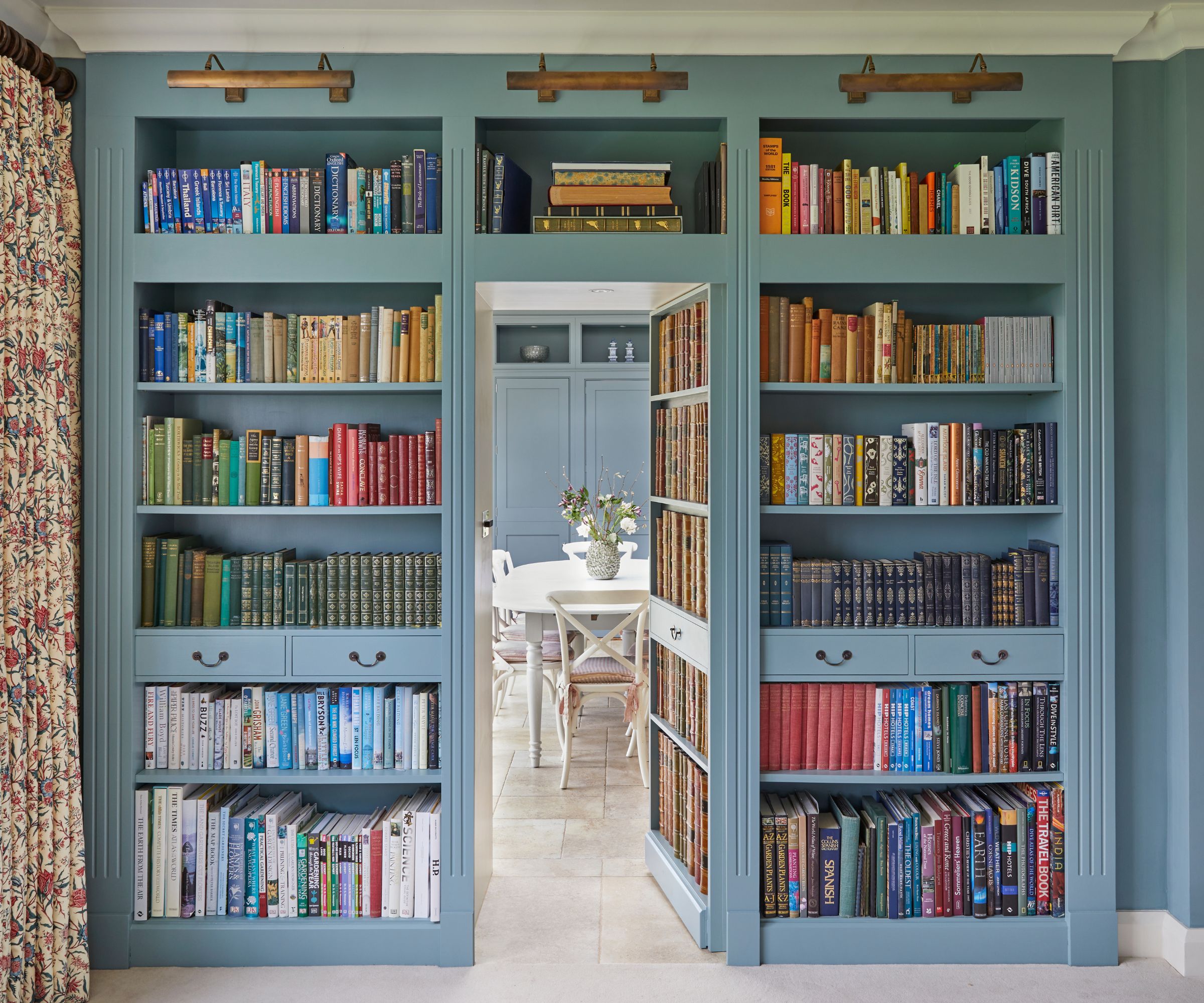
Integrating a doorway into a bookshelf brings an element of fun and surprise to a library or living room. Sometimes the doorway can double as storage and hold genuine books, alternatively, if storage isn’t an issue, then the door can be decorated to give the illusion of a bookcase as done here in this space by Lucy Marsh Interiors.
‘We chose to incorporate the secret door into the bookcase here because the client is an avid reader and owns a lot of books. It is practical in terms of adding storage, and is valuable from an aesthetic perspective, layering colour and adding detail to the space,’ says Lucy Marsh.
‘Here the faux leather books down the centre of the library were installed on the secret door to the kitchen. They have been customized for the client, with personalized book tiles and authors specific to each member of the family, including the dogs,’ adds Lucy Marsh. ‘Beyond this secret door in the drawing room is a further secret door from the kitchen to the dining room.’
7. Camouflage doors with a decorative mural
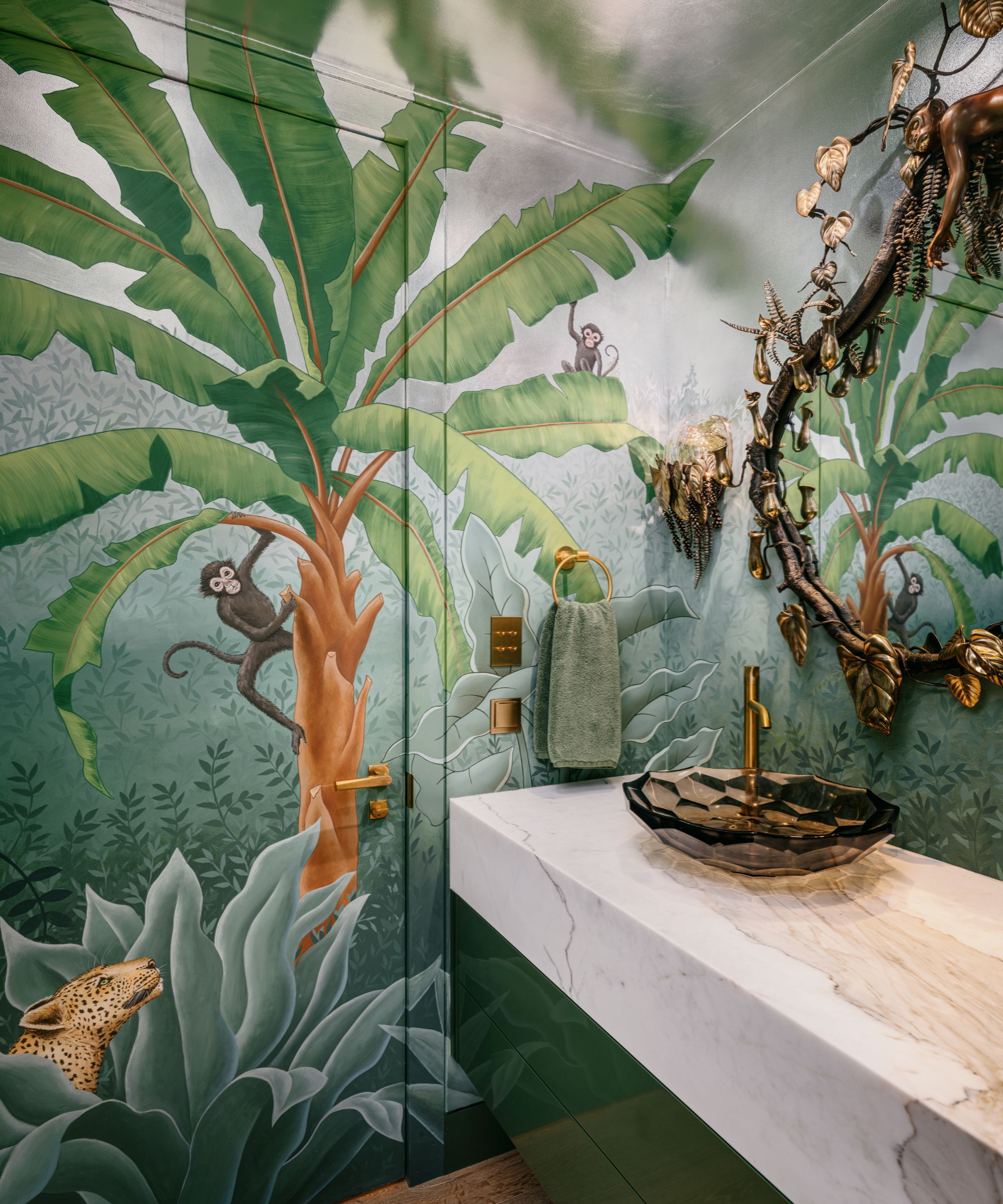
Murals are a fabulous way to create spaces with wow-factor and they work particularly well in powder rooms where they bring an element of surprise. Here interior designer Kendall Wilkinson created an immersive tropical oasis with maximum impact by commissioning a hand-painted jungle mural over all wall surfaces, including over the door to give the appearance of being camouflaged.
'Hidden within a magnificent luxury powder room in a San Francisco high-rise is a tropical-inspired secret: a concealed door that seamlessly blends into the vibrant, hand-painted mural adorning the walls,' says Kendall Wilkinson, founder of Kendall Wilkinson Design. 'This breathtaking mural bursts with bold, bright colors and playful motifs, featuring mischievous monkeys, lush jungle flora, and exotic fauna. The artwork transforms the functional space into a lush, tropical escape, offering an unexpected moment of wonder and serenity amidst the city’s urban buzz.’
8. Bring fun to guest accommodation with a slim hidden door
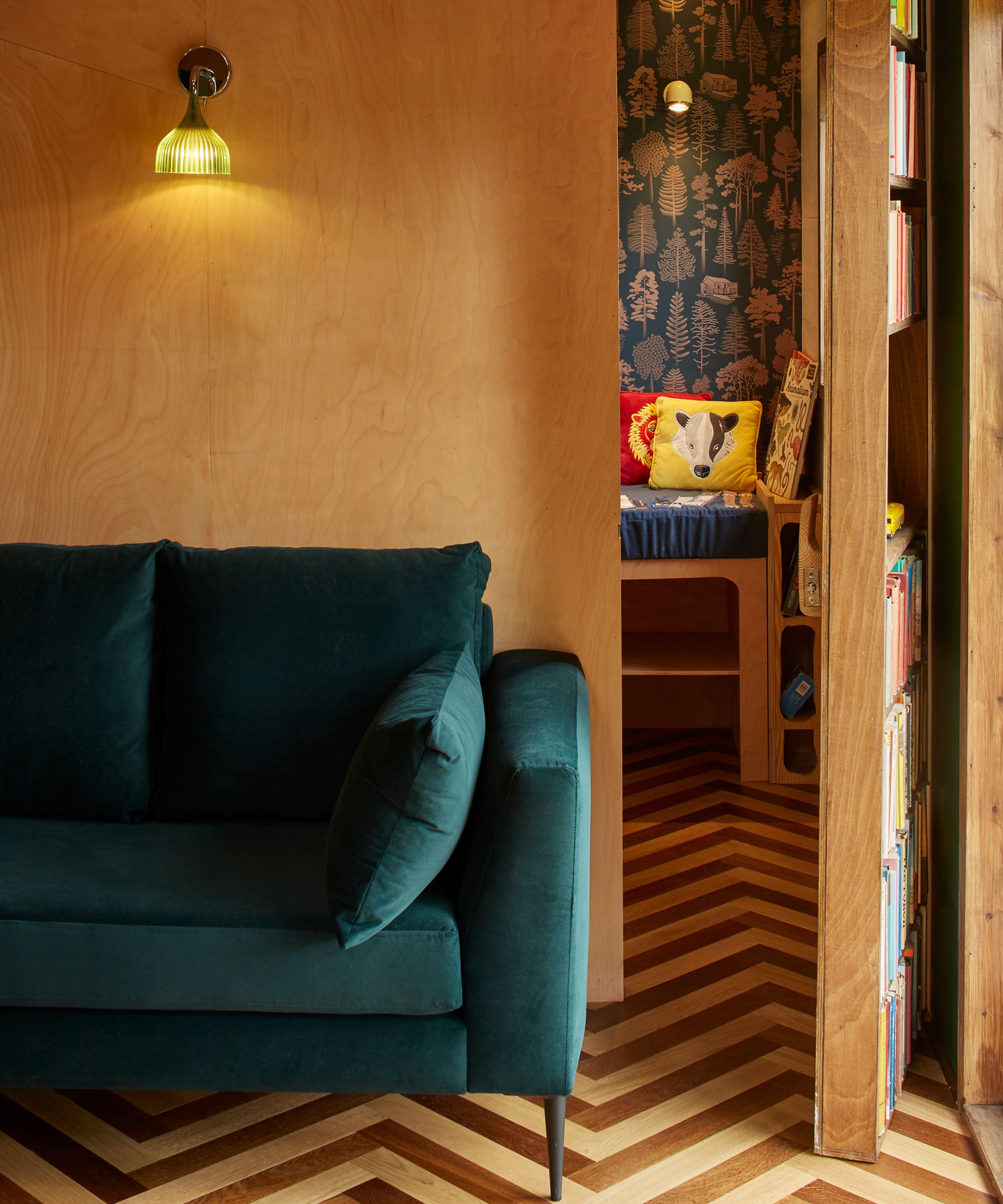
Holiday lets or guest suites are great places to introduce hidden doors as they both save space and add fun and intrigue for visitors. In this eco cabin by The Vactionist the designers chose a dual-purpose bookcase door which cleverly leads from the living area to a secret second bedroom, providing extra storage without infringing on the sleek Scandi-inspired interior. A statement chevron floor runs throughout helping visually link the two spaces when the door is open.
9. Paper doors to create a whimsical cocooning feel
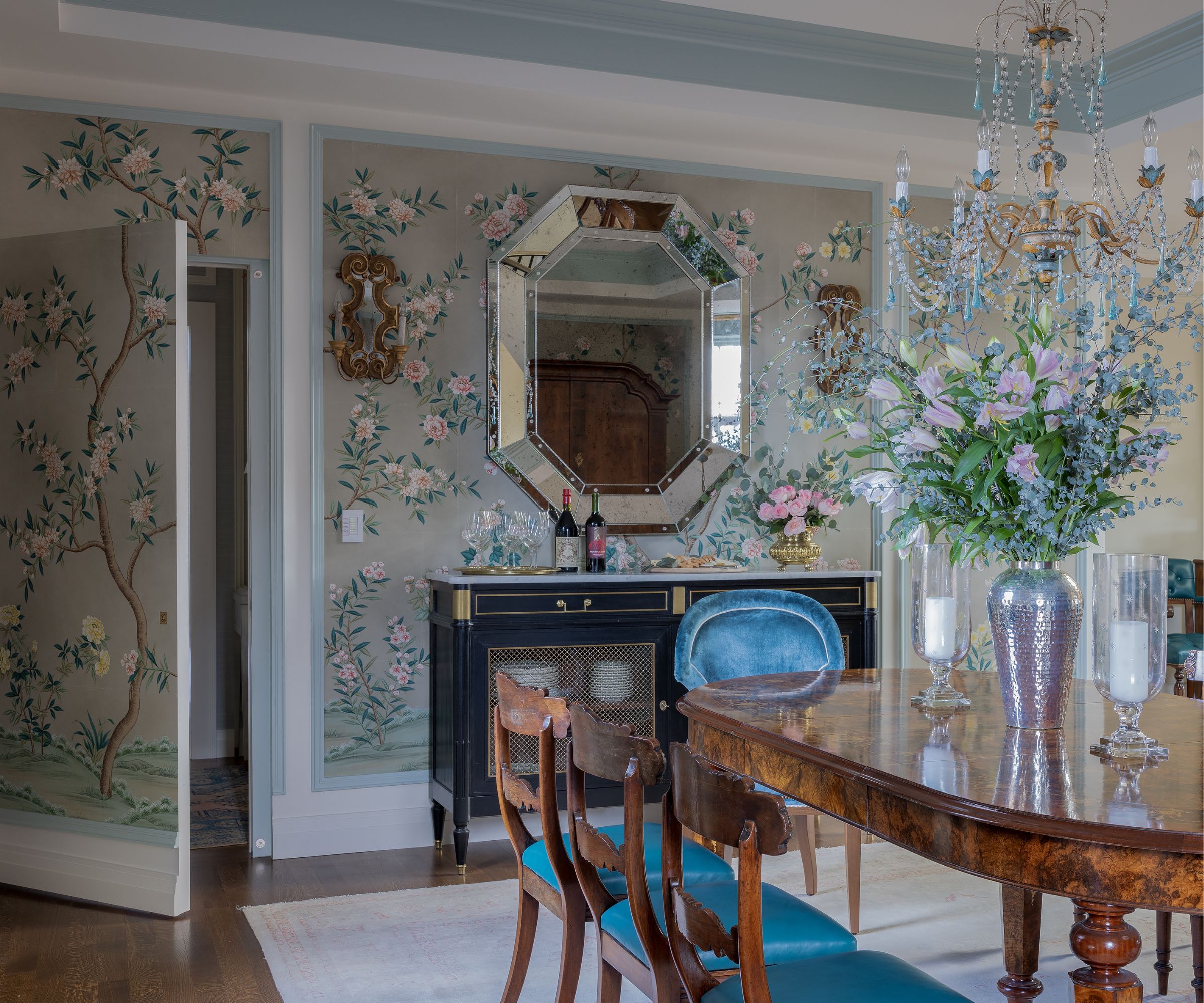
Large dining rooms are wonderful spaces to introduce decorative wallpapers and murals, creating a magical and immersive experience for dinner guests. In this space by interior designer Robin Gannon, a beautiful Chinoiserie wallpaper complete with wallpapered doors creates a really immersive and whimsical space. Hiding the door allows the room to retain its elegant symmetry created by the paneling.
‘For this stunning Beacon Hill gut renovation, the dining room serves as a transitional space, opening directly to the elevator vestibule and foyer, a designated egress path. To downplay the utilitarian nature of this connection, we introduced an exquisite hand-painted Gracie scenic wallpaper which enhances the room's aesthetic but also conceals a discreet jib door,' says Robin. 'Evoking the elegance of high society’s upstairs-downstairs era, the door seamlessly integrates into the design, reminiscent of a time when white-glove service and refined hospitality were the norm.'
'The intricate pattern cleverly disguises the natural seams of the door, contributing to an uninterrupted, cohesive visual flow. This thoughtful design choice creates a cocooned, intimate atmosphere, perfect for private dining,' she adds.
10. Use a hidden door to conceal a home bar
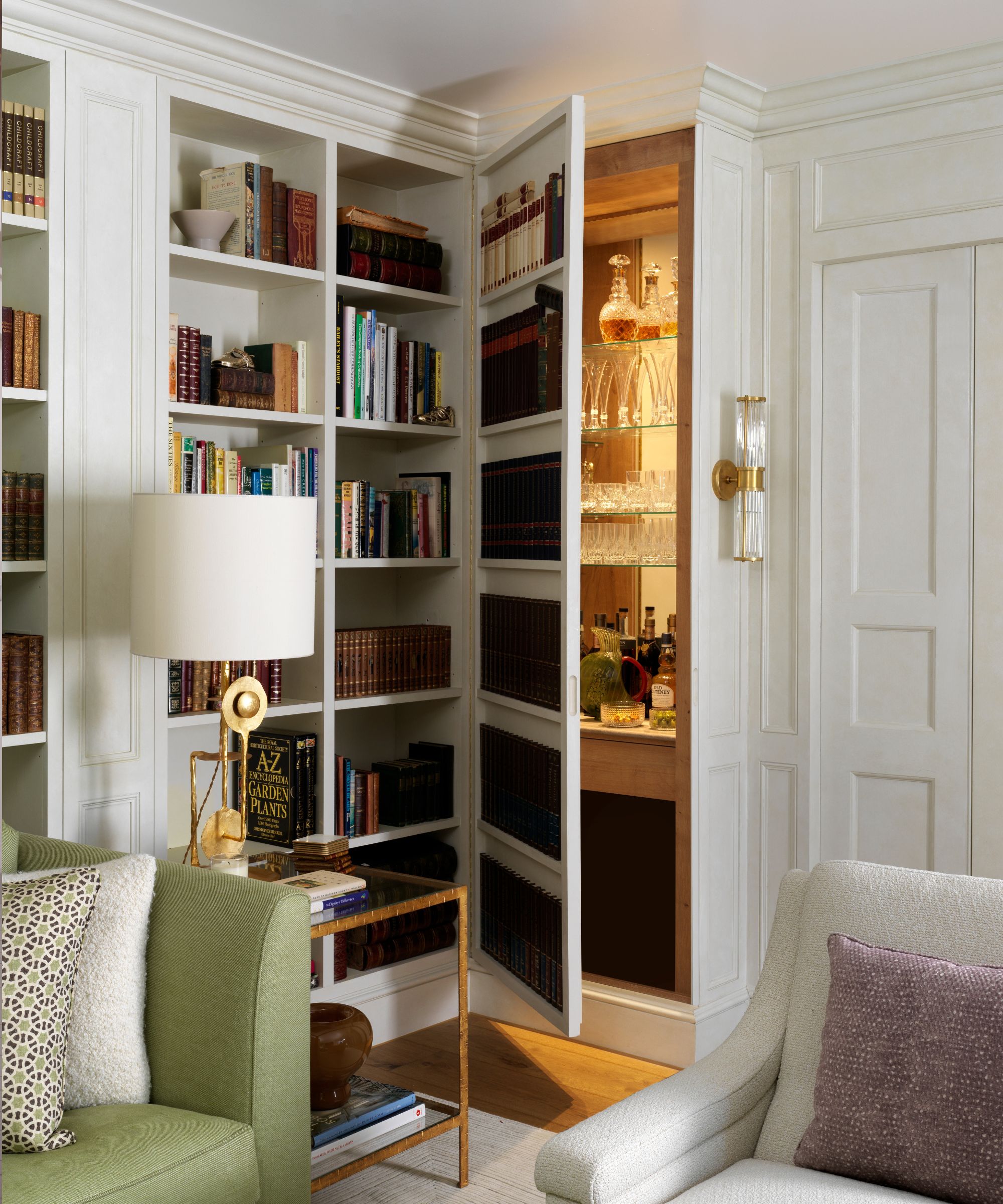
Why not bring a sense of fun to entertaining spaces by introducing a hidden home bar? Here the designers at Studio QD created a secret door disguised with a trompe-l'œil bookcase effect to give the illusion it's seamlessly integrated into its surroundings.
‘In this space we wanted to create flexibility of use, creating a living room that would transition from daytime relaxation to evening socializing with ease,' says Jena Quinn, co-founder of Studio QD. 'The traditional library bookshelves bring structure, texture, and personality to the space, whilst the hidden bar adds an element of the unexpected. The little details make all the difference, and I love how one of the faux books has been causally placed on top, adding to the playful nature of the design.'
11. Consider your handles
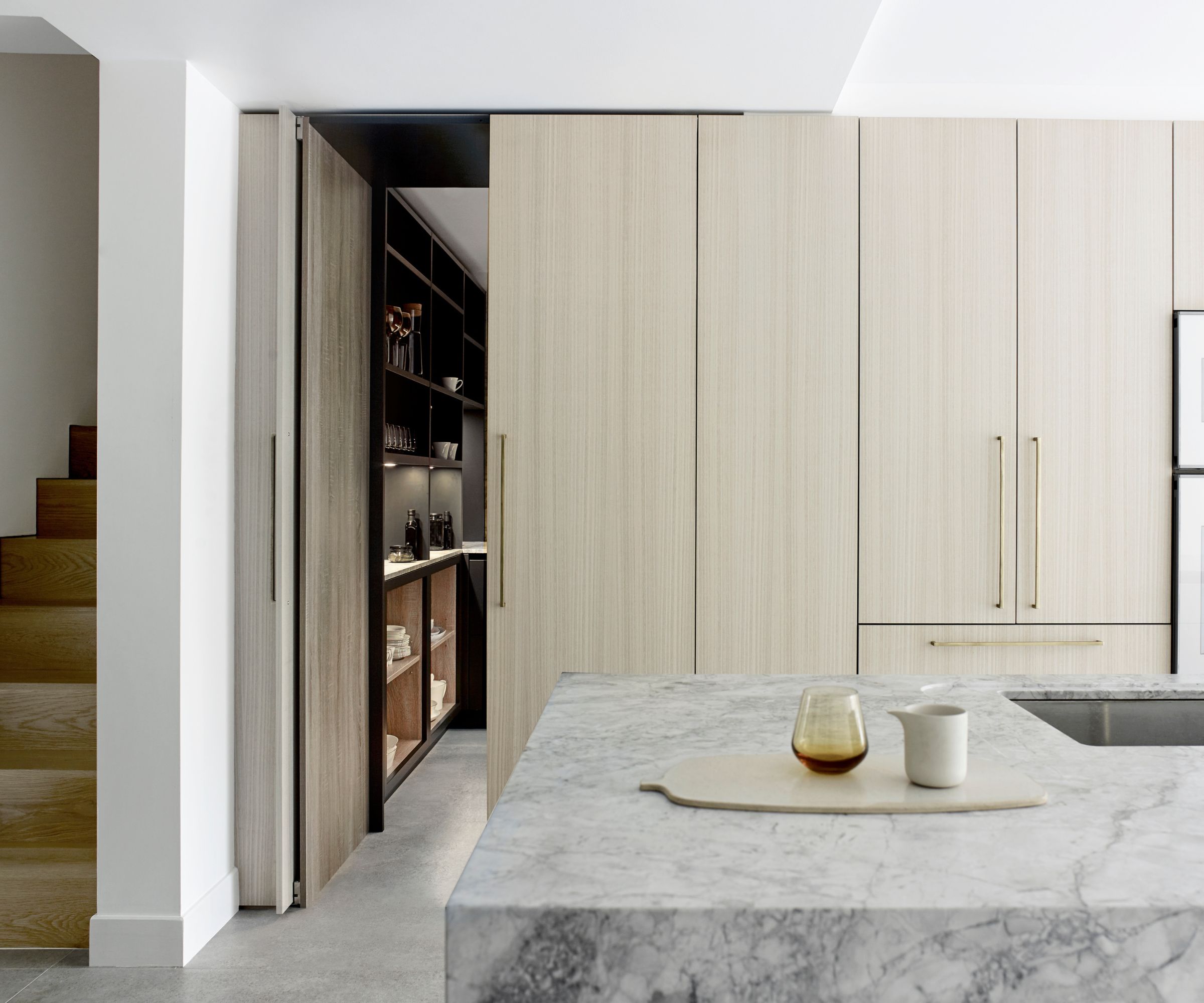
Handles and door finishes are a key consideration when it comes to invisible kitchen designs with hidden doorways. While handleless designs give a sleek aesthetic these aren't always best for heavy doors. A professional kitchen designer can always advise on suitable door styles and mechanisms.
‘For those looking for a sleek, streamlined contemporary feel physical handles can add too much fuss. However, a recessed handle is a great opportunity to introduce another material and create highlights without committing to using it on the entire cabinetry,' suggests Alice Hood, designer at Roundhouse.
‘Using an integrated handle on an appliance or heavy door is not advised as the suction or weight can make them very hard to open. In these cases, we usually opt for a single elegant handle which ties in with the scheme, providing practicality and ease of use,’ she adds.
Hidden doors are clever interior features which can enhance spaces in multiple ways. One of their key benefits is their ability to bring visual unity to a room. When rooms have multiple entrances they can often lose their identity and lack coziness and purpose – but by concealing doors behind cabinetry or setting them discretely into the architecture you can create functional spaces with their own distinct function and visual identity.
Sign up to the Homes & Gardens newsletter
Design expertise in your inbox – from inspiring decorating ideas and beautiful celebrity homes to practical gardening advice and shopping round-ups.

Pippa is a contributor to Homes & Gardens. A graduate of Art History and formerly Style Editor at Period Living, she is passionate about architecture, creating decorating content, interior styling and writing about craft and historic homes. She enjoys searching out beautiful images and the latest trends to share with the Homes & Gardens audience. A keen gardener, when she’s not writing, you’ll find her growing flowers on her yard for styling projects.
-
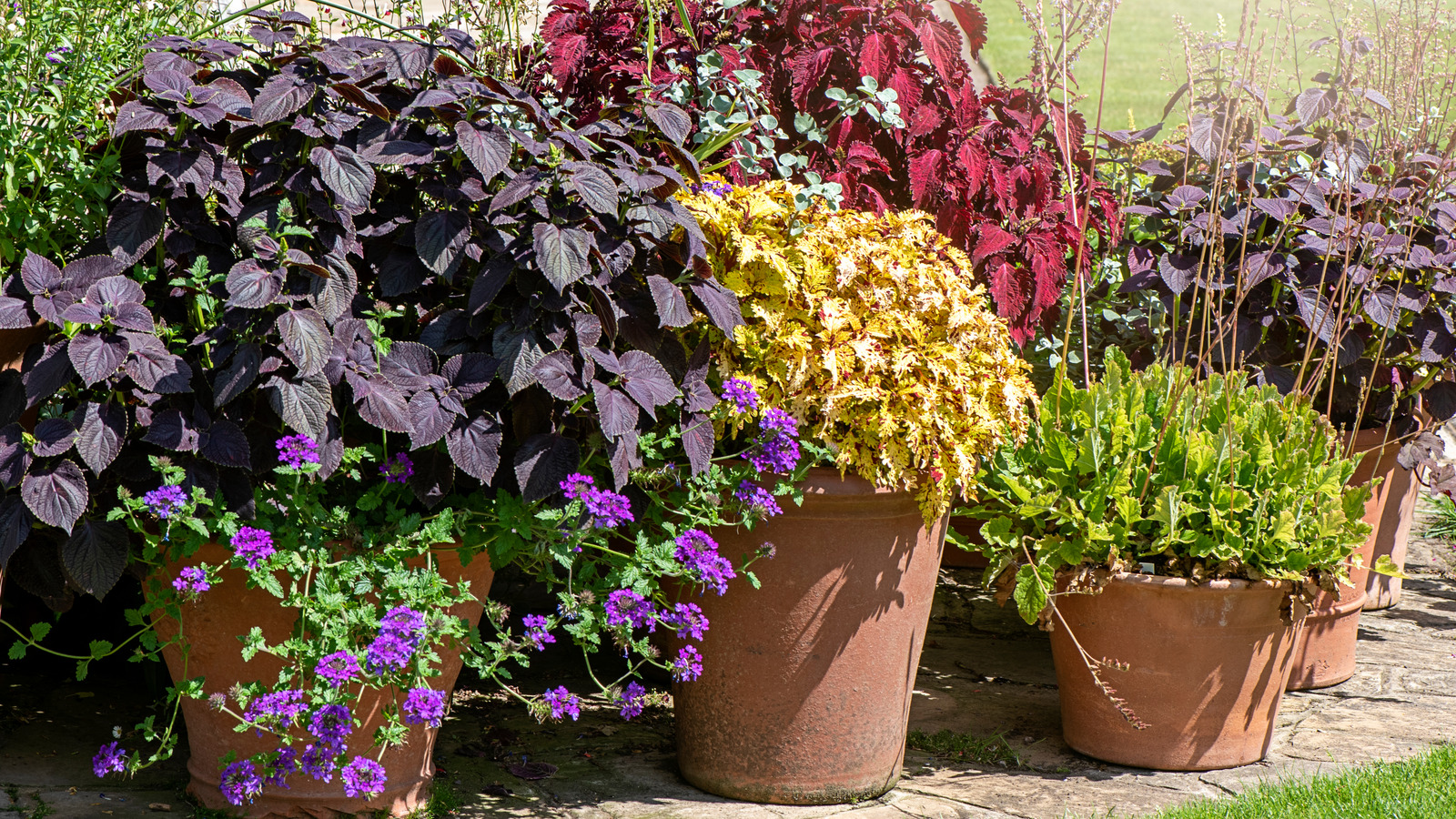 Low maintenance plants for pots for fuss-free flowers and foliage
Low maintenance plants for pots for fuss-free flowers and foliageThere's no need to fuss over these beauties-so you can relax this summer whether you're away or at home
By Jacky Parker
-
 I tried the 3-5-7 styling method to give my cluttered decor more intention – it was a tiny tweak, but it made my home feel considered and curated
I tried the 3-5-7 styling method to give my cluttered decor more intention – it was a tiny tweak, but it made my home feel considered and curatedCentering around styling in odd numbers, the 3-5-7 styling rule brought life to my displays and gave my scheme purpose
By Eleanor Richardson